‘Sargent and Fashion’ Is About the Clothes That Make the Sitter
- Oops!Something went wrong.Please try again later.
- Oops!Something went wrong.Please try again later.
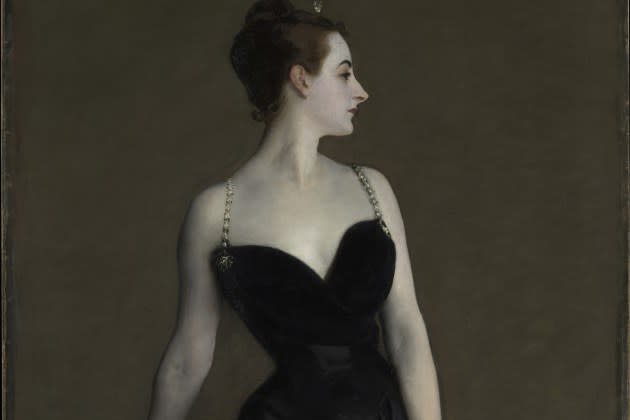
LONDON — If a picture is worth a thousand words, then surely a painting by the artist John Singer Sargent accompanied by the dresses worn in his portraits are worth a million words — or pounds.
“Sargent and Fashion” at the Tate Britain, on until July 7 — based on “Fashioned by Sargent,” which opened at Boston’s Museum of Fine Arts in 2023 — takes into account the garments that are featured in his paintings.
More from WWD
Sunset Boulevard's Kiosk-o-thèque Is a Newsstand Meets Cultural Hub
EXCLUSIVE: A Look at Fashion Designer Adam Lippes' Furniture for Oka
It’s the first time the London-based museum has used fashion on this scale in one of its exhibitions.
“What’s fascinating about some of the pairings that we have between the paintings and costumes is that they have not been in the same space since Sargent’s studio,” said Chiedza Mhondoro, assistant curator at Tate Britain.
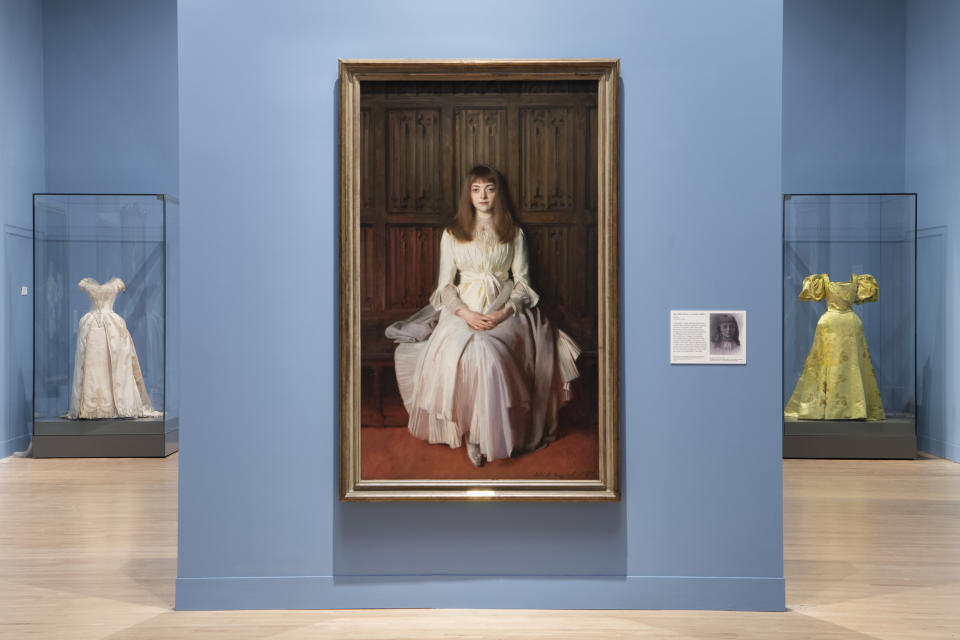
The MFA’s Croll senior curator of American paintings, Erica Hirshler, conceived the idea of the exhibition after being invited to give a paper at the Petit Palais in Paris in 2016 focusing on the fashion in Sargent’s paintings.
“They had an exhibition about Oscar Wilde, with a symposium about the dandy as a type. I presented my paper about Sargent’s portraits of men and then began to think about the clothes in his work and what they said publicly. I proposed this exhibition in 2017 and have been working on it ever since, with some delays during COVID[-19],” she said in a WWD interview last year.
Pairings in the exhibition include a portrait of “Lady Sassoon” from 1907 with a black opera cloak; “Miss Elsie Palmer” with a white House of Worth dress; an acid green House of Worth dress with a painting of “Mrs Joshua Montgomery Sears”; “La Carmencita,” based on the Spanish dancer accompanied by her golden costume; Ellen Terry as Lady Macbeth with her cotton, silk and lace beetle-wing gown, and “Charles Stewart, Sixth Marquess of Londonderry” with items from his regalia.
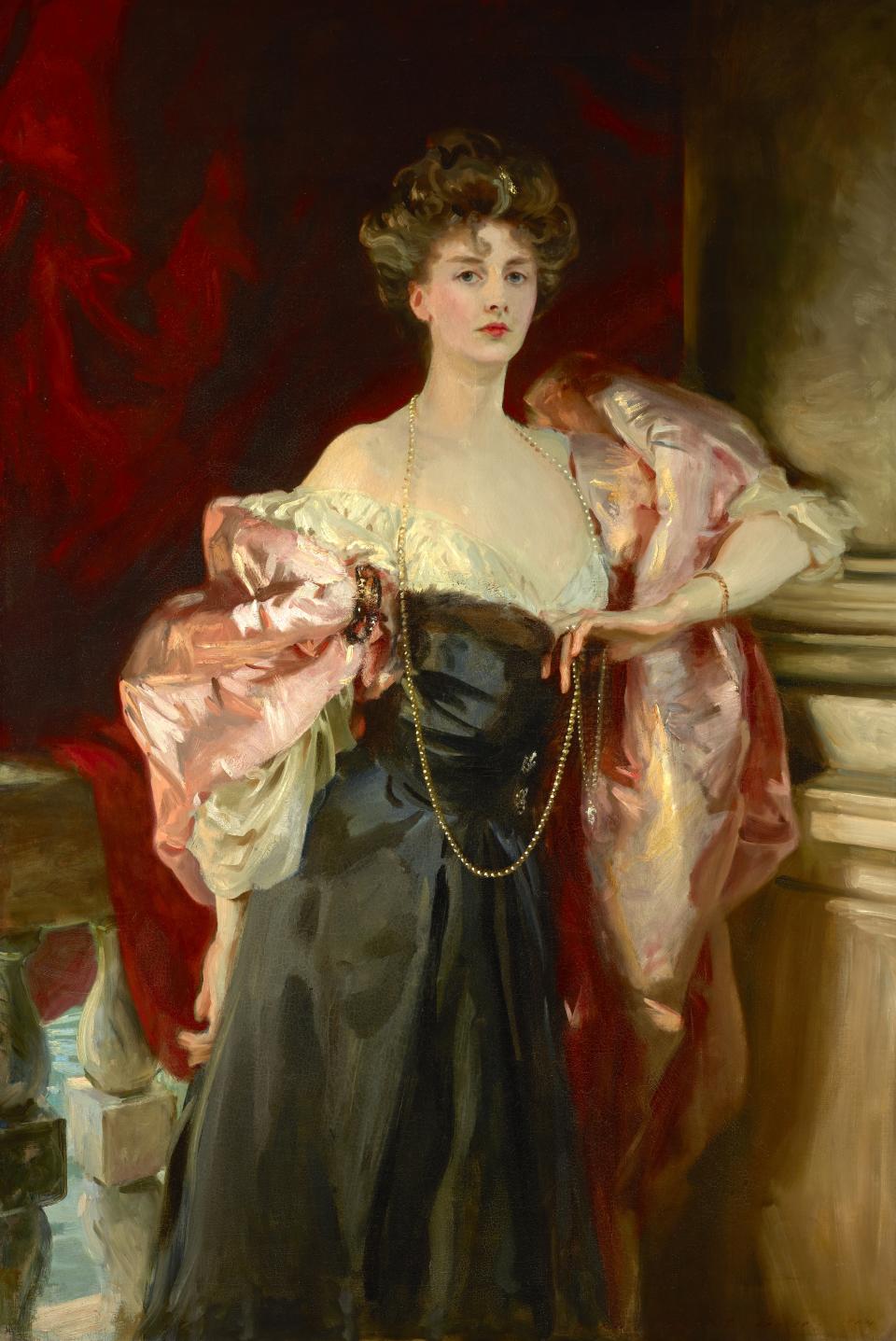
“I think what makes this unique is how Sargent kind of saw himself as a dressmaker,” said Mhondoro.
His sitters would often arrive at the studio with their maids and a handful of beautifully crafted gowns that the artist would reject and opt for plain day dresses embellished with subtle embroidery.
Once the subject had worn the garment, Sargent would often make changes to the portraits, such as taking off a sleeve to make the dress asymmetric.
“There’s an element of styling, not just replicating what someone wore,” Mhondoro explained.
In the nine rooms that contain the pairings, the room “Wonderful Possibilities” dissects gender codes and what it meant to be masculine or feminine at the time.
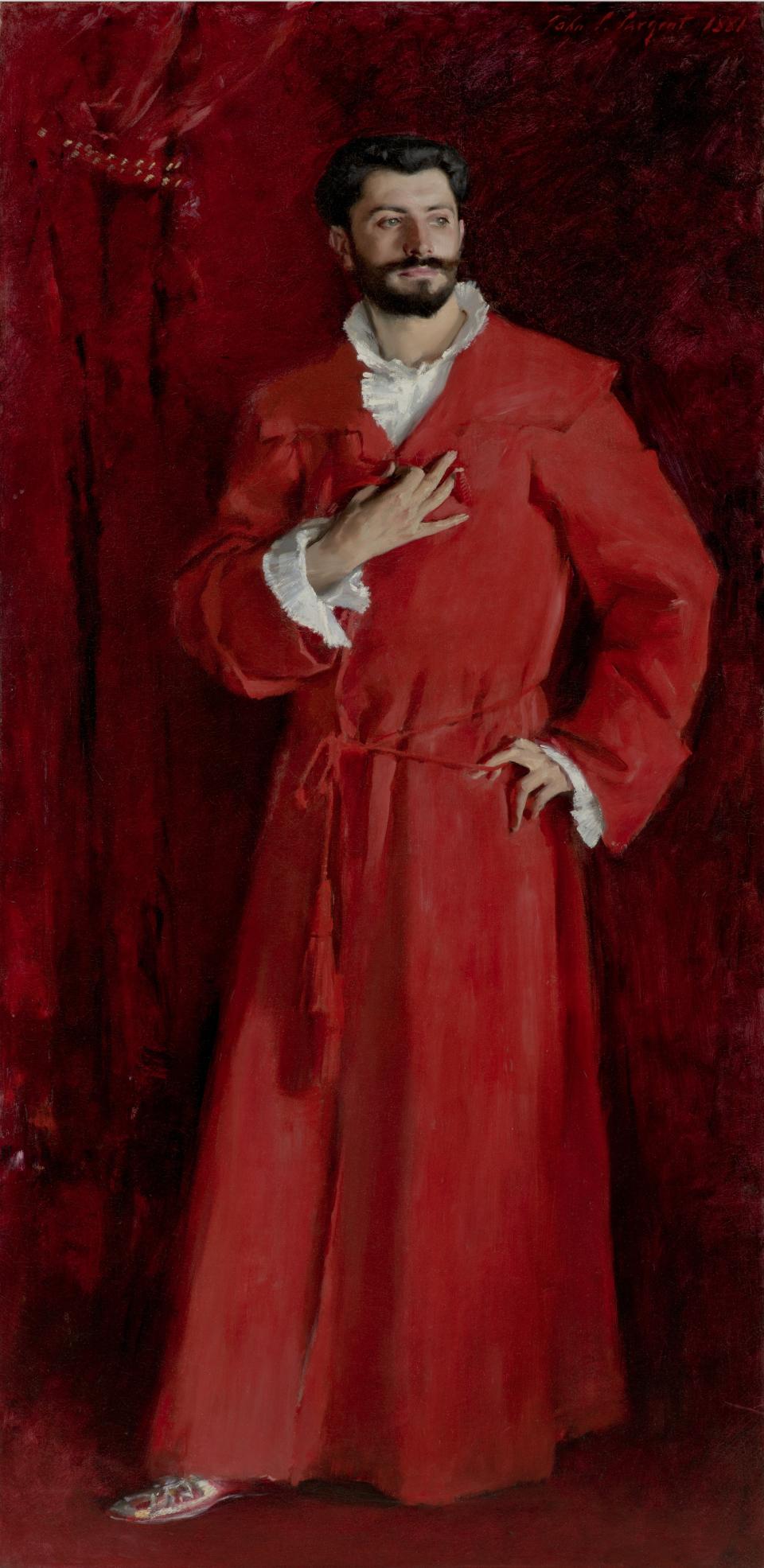
“Dr. Pozzi at Home,” a large portrait based on the French gynecologist and art collector Samuel Jean de Pozzi that shows him at home in a red robe with a white ruffled shirt peeking out and wearing a red slipper with white embroidery is shown against a portrait of Henry Lee Higginson sitting down in a formal deep brown suit.
“Fashion is key because it tells us something so important about the time period, but also if we look at portraiture as a genre of painting, someone’s garment takes up so much of the picture and it has a massive effect on the overall character and feel of the painting. In a way, you can’t really separate those [fashion and the subject],” said Mhondoro.
Sargent observed all walks of life — even presidents.
Woodrow Wilson, the 28th president of the U.S. from 1913 to 1921, was also captured by Sargent’s brush in 1917, sitting on a brown leather chair in a black suit with gray trousers.
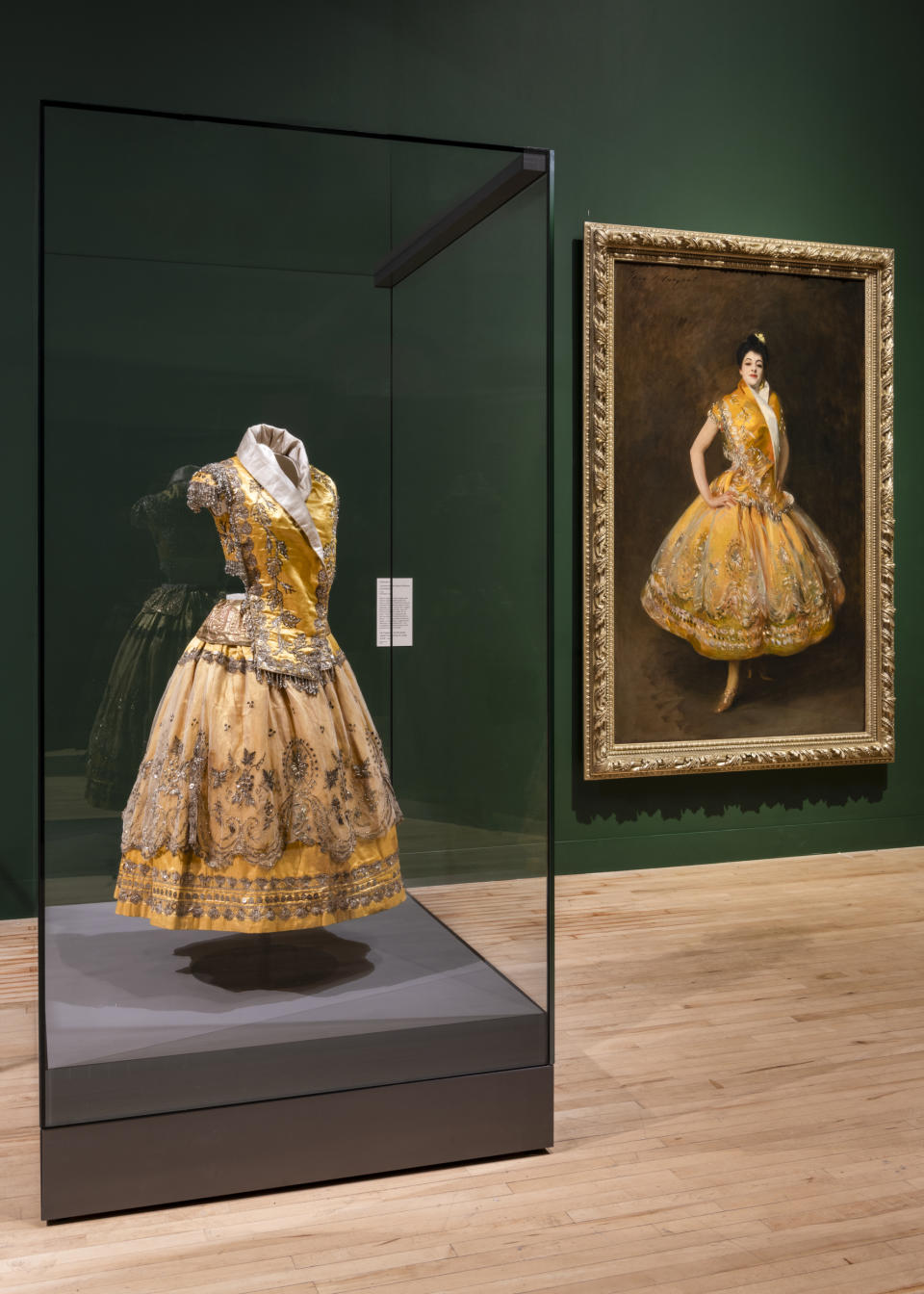
The exhibition may be on the nose at times, but it provides topicality in a fun and interactive way.
Even though “Sargent and Fashion” is a big feat for fashion, some art critics didn’t understand what the rave reviews were about.
Jonathan Jones, an art writer for Britain’s Guardian newspaper, gave the exhibition one star and wrote “tragicomic travesty is a frock horror.”
“Sargent’s gloriously rich and subtle paintings can’t be reduced to dreary facts about hats, dresses and opera gowns,” he added in his review.
The paper’s associate fashion editor Jess Cartner-Morley took to Instagram to defend the exhibition.
“It’s interesting to me that JJ seemed offended by the presence of dresses in the gallery. They are displayed in museum cases next to the paintings they feature in,” she wrote in a post, explaining that even though she doesn’t love the garments in this context, she can appreciate the storytelling element and that “fashion exhibitions sell tickets like hot cakes.”
The latter statement was proven to be true earlier this year with “Gabrielle Chanel. Fashion Manifesto,” which received an extended date after selling out within three days of opening.
Best of WWD

